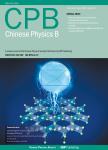Role of the aperture in Z-scan experiments: A parametric study
Role of the aperture in Z-scan experiments: A parametric study作者机构:Laser and Optics Research SchoolNSTRI
出 版 物:《Chinese Physics B》 (中国物理B(英文版))
年 卷 期:2015年第24卷第11期
页 面:280-284页
核心收录:
学科分类:070207[理学-光学] 07[理学] 08[工学] 0805[工学-材料科学与工程(可授工学、理学学位)] 0704[理学-天文学] 0803[工学-光学工程] 0702[理学-物理学]
主 题:nonlinear optics Kerr effect Z-scan electromagnetic wave propagation
摘 要:In close-aperture Z-scan experiments, a small aperture is conventionally located in the far-field thereby enabling the detection of slight changes in the laser beam profile due to the Kerr-lensing effect. In this work, by numerically solving the Fresnel-Kirchhoff diffraction integrals, the amount of transmitted power through apertures has been evaluated and a parametric study on the role of the various parameters that can influence this transmitted power has been done. In order to perform a comprehensive analysis, we have used a nonlinear phase shift optimized for nonlocal nonlinear media in our calculations. Our results show that apertures will result in the formation of symmetrical fluctuations on the wings of Z-scan transmittance curves. It is further shown that the appearance of these fluctuations can be ascribed to the natural diffraction of the Gaussian beam as it propagates up to the aperture plane. Our calculations reveal that the nonlocal parameter variations can shift the position of fluctuations along the optical axis, whereas their magnitude depends on the largeness of the induced nonlinear phase shift. It is concluded that since the mentioned fluctuations are produced by the natural diffraction of the Gaussian beam itself, one must take care not to mistakenly interpret them as noise and should not expect to eliminate them from experimental Z-scan transmittance curves by using apertures with different sizes.



